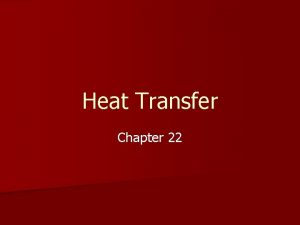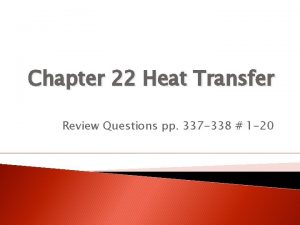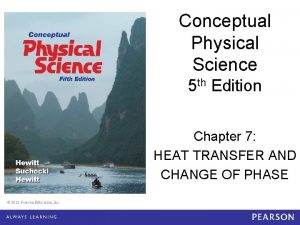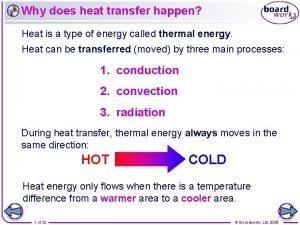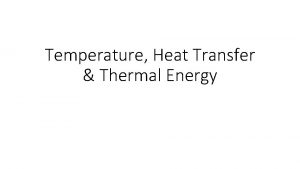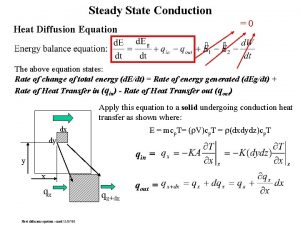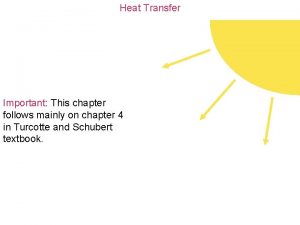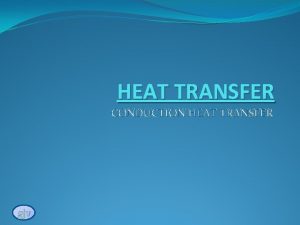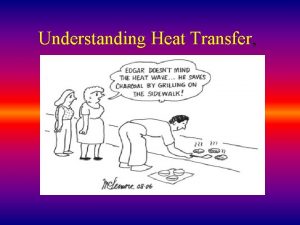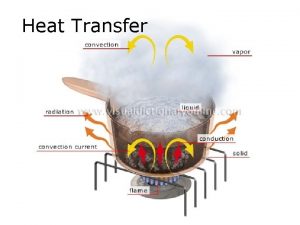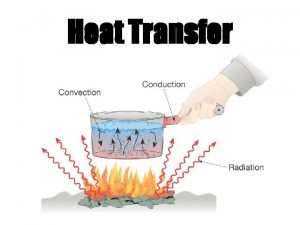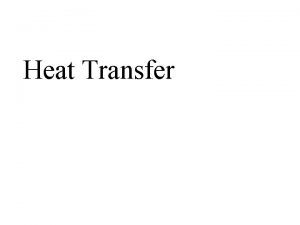Heat Transfer Important This chapter follows mainly on













- Slides: 13

Heat Transfer Important: This chapter follows mainly on chapter 4 in Turcotte and Schubert textbook.

Heat transfer: the mechanisms Three mechanisms for heat transfer: conduction, convection and radiation.

Heat transfer: the mechanisms Conduction: A diffusive process wherein molecules transmit their kinetic energy to other molecules by colliding with them.

Conduction

Conduction • We sense the movement of energy by the increasing temperature • This means the atoms and molecules have higher average kinetic energy • Primarily occurs by the movement of electrons in the material • The more easily the electrons can move, the better the conduction

CONDUCTION • Conduction occurs when molecules move fast causing kinetic energy. The heat is transferred between objects that make contact. The faster the molecules move, the higher the temperature. Molecules move easier in conductors and slower in insulators. Conductors are used to keep heat from escaping objects.

Heat transfer: the mechanisms Convection: A process associated with the motion of the medium. When a hot material flows into a cold material, it will heat the region - and vise versa.

26. 1 Heat Conduction • Conduction is the transfer of heat through materials by the direct contact of matter. • Dense metals like copper and aluminum are very good thermal conductors.

26. 2 Convection • Convection is the transfer of heat by the motion of liquids and gases. – Convection in a gas occurs because gas expands when heated. – Convection occurs because currents flow when hot gas rises and

Convection • Explains why breezes come from the ocean in the day and from the land at night

Convection • Convection is the transfer of heat between gases and liquids. The warm gas or liquid is transferred to the cooler gas or liquid. In a boiling pot of water the less dense cool water at the top sinks to the bottom where it is more dense.

Heat transfer: the mechanisms Radiation: The transfer of heat through electromagnetic radiation. A common example of radiation is the sun. Objects do not have to make contact, they can travel through empty space.

Radiation • Energy carried by electromagnetic waves • Study waves later in detail • Light, microwaves, radio waves, x-rays • Wavelength is related to vibration frequency
 Chapter 22 heat transfer exercises answers
Chapter 22 heat transfer exercises answers Chapter 22 heat transfer exercises answers
Chapter 22 heat transfer exercises answers Chapter 7 heat transfer and change of phase
Chapter 7 heat transfer and change of phase Newspaper article format
Newspaper article format From most important to least important in writing
From most important to least important in writing Least important to most important
Least important to most important A disturbance that transfers energy is called
A disturbance that transfers energy is called Youtube
Youtube Rules in chemistry laboratory
Rules in chemistry laboratory How does heat travel
How does heat travel Is newton a fundamental unit
Is newton a fundamental unit Which is the best surface for reflecting heat radiation
Which is the best surface for reflecting heat radiation Heat and temperature
Heat and temperature The heat diffusion equation
The heat diffusion equation
